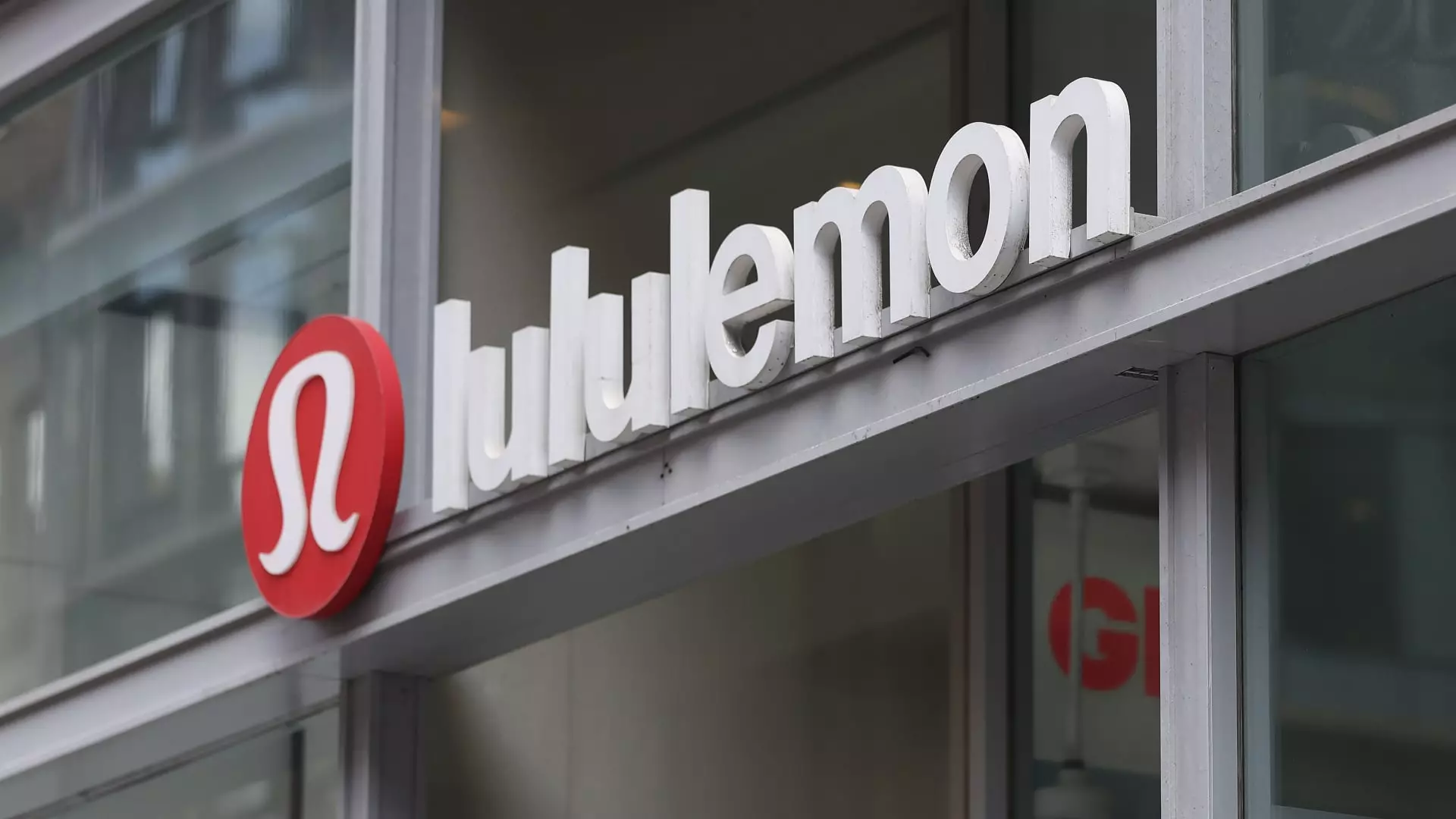In recent months, the U.S. economy has been shaken to its core by tumultuous tariff policies, predominantly initiated by former President Donald Trump. Tariffs that aimed to rectify trade imbalances have instead led to a cascade of financial distress among various sectors, particularly retail, technology, and manufacturing. The chaos is palpable, with stocks plummeting across the board, highlighting the fragility of our economic framework amidst protectionist measures that many have deemed counterproductive.
Retail Sector: A Heavy Price to Pay
Take Lululemon, for instance. The athleisure brand suffered an alarming stock drop of over 11% shortly after tariffs targeted vital trading partners, including Vietnam—where a staggering 40% of Lululemon’s products are sourced. The reality is that nearly 90% of the brand’s merchandise is manufactured in countries like Vietnam, Cambodia, Sri Lanka, Indonesia, and Bangladesh. This over-reliance on a narrow set of geographic markets is dangerous, to say the least. While tariffs might elevate domestic prices as a means to support U.S. manufacturing, they also create an unsustainable strain on companies that have heavily invested in international supply chains. This isn’t merely a hiccup; it reflects the shortcomings of a market unable to adapt swiftly to arbitrary policy shifts.
Deckers Outdoor, the company behind the ubiquitous Ugg brand, faced a similar fate, witnessing a staggering 14% plunge. With supply chains spread across 68 partners in Vietnam and 125 in China, the timing and breadth of these tariffs could not have been worse. This isn’t just economic policy—it’s a vendetta against companies that have played by the rules, which now find themselves scrambling to mitigate losses as consumers feel the ripples of rising prices.
Consumer Spending and Price Sensitivity
Discount retail chains like Five Below and Dollar Tree, typically champions of affordable shopping, were also not spared. Shares plummeted over 27% and 9%, respectively, as fears of increased consumer prices loomed large. Dollar Tree’s CEO has even suggested that price hikes might be necessary to weather the storm. This vicious cycle—tariffs leading to higher prices which, in turn, reduce consumer spending—signals an impending crisis in the U.S. economy. The average American family, continuously grappling with stagnant wages and soaring living costs, will undoubtedly think twice before indulging in luxuries, further hampering economic growth.
Banking Sector Blues
Tariff-related anxiety has not left the banking sector unscathed. Major institutions like Goldman Sachs and Morgan Stanley reported declines near 8%, while JPMorgan Chase and Bank of America fell sharply as traders braced for the economic fallout. Banks function as the backbone of the economy, providing crucial liquidity and driving investment—yet, when their stock performances falter due to policy uncertainty, the entire economy feels the tremors. Investors seek stability, and when markets are in disarray, both consumer and institutional trust erodes significantly.
The Technology Sector: Stranded in Quicksand
The tech industry—one of America’s most prized economic sectors—also saw shares slide dramatically. Nike, for example, witnessed a decline of over 12% due to elevated tariffs on goods sourced from China and Vietnam, where approximately half of its manufacturing takes place. For tech giants like Amazon and Apple, the drop of 7% and 8% respectively raises an alarming question: How resilient can these titans remain when their foundation is rocked by unpredictable tariffs?
While the White House reassured markets that semiconductors would remain tariff-free, shares of Nvidia and AMD still fell over 6% as uncertainty clung to broader market perceptions. This raises critical issues: Is the U.S. tech industry prepared for a future where trade wars dictate the ebb and flow of innovation, with vital supplies hanging in the balance? In a globalized economy, unpredictability can be as damaging as outright conflict.
The Debacle of Luxury Market
The luxury market faced its own cataclysm as RH, a high-end furniture retailer, plunged nearly 43.5%, marking one of its worst trading days. With a CEO attributing the downturn to “the worst housing market in almost 50 years,” it’s evident that tariffs are negatively impacting not just consumer goods but also the broader economic landscape. This isn’t merely an isolated incident; it speaks to a wider malaise within the economy, exacerbated by ill-advised trade practices.
The appetite for luxury is often tied to economic stability. When prospective homeowners pull back, luxury retailers inevitably follow suit, amplifying the ramifications of misguided policies. With such a latent vulnerability in the luxury sector, the question remains—what will be the long-term impact of these tumultuous policies?
The Trump-era tariffs were a bold experiment that has backfired in numerous sectors, leaving the U.S. economy teetering on the precipice of uncertainty. In the name of securing American interests, we may have complicated our road to recovery, possibly for years to come.

